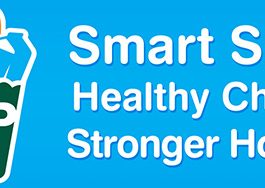Struggling Farmers Work With Overwhelmed Food Banks to Stay Afloat
(Editor’s note: This story was updated to clarify the California Department of Food and Agriculture’s role in the Farm to Family program)
As the pandemic shut down restaurants this spring, California farmers and ranchers saw their markets drop by half, leaving many with fields full of crops but no buyers. And as millions of people lost their jobs, the state’s food banks needed to triple their food supply.
Fortunately for California, the state had a longstanding initiative tailor-made to help with these twin crises. The Farm to Family program, run by the California Association of Food Banks and supported by the state’s Department of Food and Agriculture, pays farmers to send surplus produce to food banks.
“All the farmers in California that we work with, they rely on us as we rely on them,†said Steve Linkhart, who directs the program. “When some sources dry up, we’re still there to take the products they have in excess. During this time, the farmers have really leaned on food banks to be an outlet for their product.â€
More than a dozen states have similar programs, and many have scaled up their efforts this year. Several other states have created or expanded online marketplaces for their farmers and ranchers as many transitions to direct-to-customer sales. The programs are a boon as 17 million Americans face food insecurity as a result of the pandemic, according to Feeding America, a hunger-relief organization.
Meanwhile, the U.S. Department of Agriculture has launched its own $3 billion effort to buy food from farmers and deliver it to food banks. The program delivered 50 million food boxes by the end of July but has been plagued by controversial contracts, disparities in distribution difficulties in the supply chain, according to news reports as the program rolled out. The department did not respond to questions.
In the California program, farmers donate their crops but are reimbursed by the food banks for labor and packaging expenses. Those small payments have been just enough to keep some farmers in business, Linkhart said, though he noted that many small farmers don’t have the acreage to make participating worthwhile.
The program had been shipping about 12 million pounds a month before COVID-19, providing food banks with produce such as potatoes, onions, apples, oranges, and pears. The volume quickly spiked as high as 18 million pounds during the pandemic’s early months but tapered off as federal supplies arrived. Linkhart said some of the USDA crops were shipped from out of state, and California farmers have been hurt by the reduced demand.
“If food banks can’t take more product [from the California program], farmers are going to go out of business,†Linkhart said. “That’s how much they’re actually leaning on us right now. We’re doing everything in our power to move their product.â€
Farmers have teamed up with food banks in other ways as well. California dairy farmers saw half of their market collapse overnight as restaurants and foodservice operators shut down. Overwhelmed processors with miles-long lines of milk trucks told farmers to start dumping milk.
“That is extremely depressing for a dairy farmer,†said Anja Raudabaugh, CEO of Western United Dairies, a trade group that represents more than 900 farms in California. “It’s a mind-numbing event. Our suicide hotline was tapped 86 times in 48 hours.â€
Raudabaugh said the state’s dairy industry is relying on food banks to be a major customer, in part because they have refrigerated trucks and storage that solve farmers’ distribution woes. (She noted that processing costs and perishability concerns don’t make dairy a good candidate for the surplus Farm to Family program.)
“We’re providing many hundreds of percents more [to food banks] than pre-pandemic,†Raudabaugh said. “Some farmers would have lost their whole herd without these [partnerships]. It was significant for them to be able to stay in business.â€
Cannon Michael, CEO of the Bowles Farming Company in the San Joaquin Valley, was sitting on a crop of onions and other produce but had lost many restaurant buyers. He worked with the Farmlink Project, a nonprofit started by college students to connect farmers and food banks.
“The money has to be there to justify the harvest,†Michael said, “and this solves some of that problem.â€
Washington’s Work
On Washington’s Olympic Peninsula, Rachael Van Laanen’s small goat dairy, Mystery Bay Farms, lost half its sales overnight as farmer’s markets and restaurants closed. Van Laanen worked with nearby farmers to add her products to their online sales and direct-delivery programs, but the farm still lacked revenue.
Many farms in the region faced similar challenges, and the North Olympic Development Council quickly moved to help. Along with several partner organizations, the group raised about $70,000 this spring. They put that cash in farmers’ pockets, paying them upfront for food the growers pledged to provide to local food banks over the next several years. Mystery Bay received $5,000.
“It’s basically keeping my employees here. It’s keeping me able to purchase labels, packaging, feed, and diesel,†Van Laanen said. “It just has allowed me to keep buying everything I need to buy to keep producing.â€
The farm expects to repay the money in about a year by donating roughly 200 pounds of cheese to local food banks.
Scott Chichester, who also received $5,000 for his small produce farm, said he’s already delivered enough salad mixes to food banks to pay off his contract. The food would not have otherwise had a market, he said, and the extra cash helped Chi’s Farm stay afloat.
“It was really timely,†Chichester said. “It helped me have the cash on hand to keep people employed and get food to the food banks in a critical early timeframe.â€
Karen Affeld, the development group’s executive director, said benefactors were eager to keep local farmers in business, as the remote area is at the end of a fragile supply chain.
“Our retailers are still not getting everything they order, and there are shortages at local stores,†she said. “That brings home that we do need a local food economy. We don’t want this to be a situation where we start to lose farms.â€
State leaders also have bolstered such efforts. Just before the pandemic began to threaten the United States, Washington lawmakers budgeted $100,000 to boost the state’s Farm to Food Pantry Initiative, a program similar to California’s that launched in 2014.
It’s a partnership between the Washington State Department of Agriculture and Harvest Against Hunger, a Seattle-based nonprofit. With the new state funding and local donations, the program has significantly increased its food distribution, connecting 120 food banks with about 75 farmers.
By spending money early in the pandemic, the program gave farmers cash up front and allowed them to stay afloat, and now they’re harvesting crops bound for food banks.
“Many farmers have said that having these contracts really saved them this year,†said David Bobanick, the group’s executive director.
Bobrick noted that for every pound of food the partnership buys, another four pounds are donated by farmers.
“Once you establish that local connection, the farmers are very generous,†he said. “It’s this symbiotic relationship where the farmers and hunger relief organizations are benefiting.â€
The food is more nutritious than the meals food banks normally would be able to provide, he added.
Meanwhile, more than 100 farmers markets in Washington state have pledged to match purchases by the federal Supplemental Nutrition Assistance Program (SNAP) this year, meaning every dollar in food stamps carries $2 in buying power for local produce, eggs, dairy and meat.
“Families are able to bring home so much more locally grown food, while also keeping more of their food dollars within our community,†said Amanda Milholland, director of the Jefferson County Farmers Markets.
Milholland said the markets’ food access programs serve 500 households annually, and she’s heard from parents who couldn’t otherwise afford healthy food for their kids and fixed-income seniors who use it to meet their food needs.
Making Connections
During the pandemic, many farmers have shifted to direct-to-customer sales, using models such as community-supported agriculture — known as CSA — in which subscribers regularly receive a box of produce straight from the farm. A few states are trying to help by launching online marketplaces to connect consumers with farms.
Massachusetts already had such a program, MassGrown. Traffic to the program’s website surged this spring as residents tried to avoid crowded supermarkets or find food that was out of stock.
“You can plug in your ZIP code and see who’s selling maple syrup or tomatoes within X number of miles,†said John Lebeaux, commissioner of the Massachusetts Department of Agricultural Resources. “People are trying to access local food in an unprecedented way.â€
The state will soon expand MassGrown with a business-to-business feature, allowing farmers to advertise and find services such as refrigeration and transportation. The state also poured $36 million into a food security grant program after the pandemic hit. The wide-ranging program has funded a half-million-dollar expansion of a meat processing facility, provided small payouts to help farmers markets obtain cleaning supplies, and helped a produce farm buy a refrigerated truck.
“We want to keep our farmers productive now, but we also want to boost their resiliency far into the future,†Lebeaux said. “Will people just go right back to the supermarket after the pandemic? We want them for the long haul.â€
Amid the pandemic, Mississippi and South Carolina have launched their own online markets for farmers, designed much like classified ad pages. Both states said they were shocked at the traffic the pages received.
“We really did have an overwhelming response from our farmers and consumers,†said Paige Manning, director of marketing and public relations at the Mississippi Department of Agriculture and Commerce. “One of the products people really seemed to be inquiring about was local meat. This gave those farmers another platform where they could sell.â€
In South Carolina, CSAs and roadside markets have seen a surge in sales, said Eva Moore, communications director for the South Carolina Department of Agriculture. The state also has partnered with nonprofits to support a donor-based effort to raise $500,000 to pay farmers to supply food banks.
“If there’s one silver lining,†she said, “it’s that people are talking about local food, understanding where it comes from and in some cases laying eyes on the farmer who grows it in ways that they haven’t before.â€



